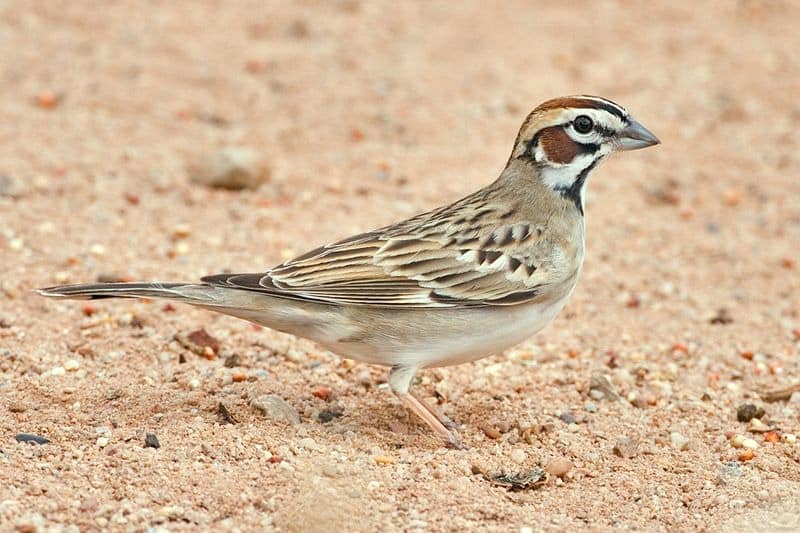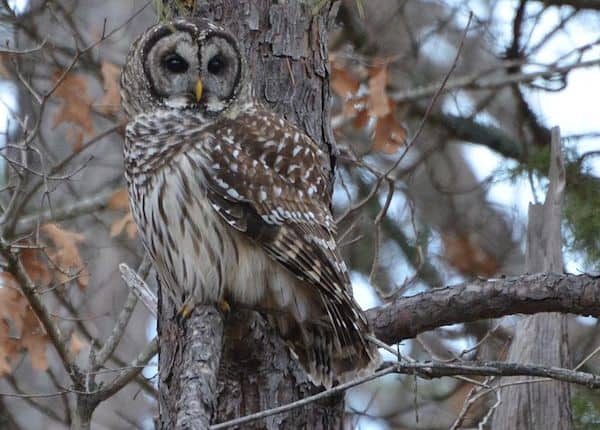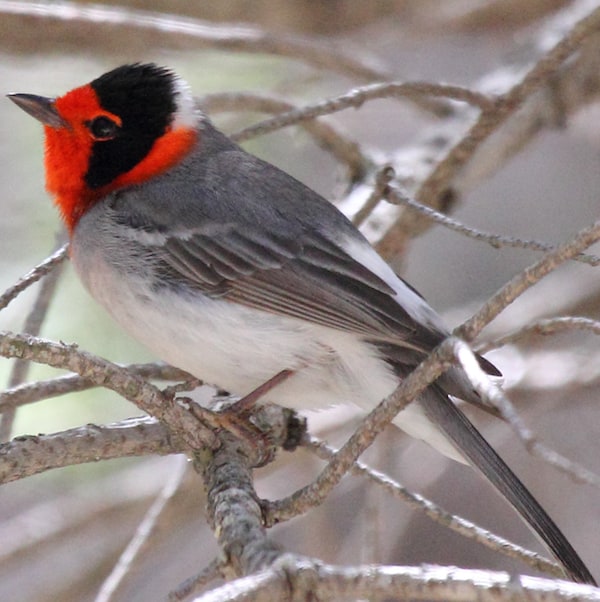Look For
No other North American sparrow has the lark sparrow’s combination of a bold, colorful facial pattern and central breast spot. This large sparrow’s bold facial markings of rufous, black, and white are diagnostic. Also note the dark central breast spot on white underparts. White sides and tip of dark tail are especially obvious in flight. The lark sparrow is 6 ½ inches in length.
Listen For
The lark sparrow’s name infers the tonal quality of its lark-like song. Its song is a rich, musical blend of whistles, trills, and buzzes and is fairly long in duration. Call is tsink and is often given in flight.
Find It
A sparrow of open country with scattered bushes, trees, and fencerows; plus farmyards, pastures, and grassland with bare ground. Often forages on the ground in the open. Nearly always in small flocks, especially in migration and winter.
Feeding Behavior
The lark sparrow forages on the ground in search of seeds and insects on bare ground or among forbs, grasses, and shrubs. It is often a selective predator in that it is picky about the size of insect and energy gain/handling time. It will also glean insects from low stems and leaves of shrubs.
Nesting Behavior
Both male and female are active in the selection of the nest site, which usually resides in poor or sandy soils with slight depressions. During copulation, the lark sparrow is unique in that the male will pass a twig to the female who then flies off to the nest site. The nest is usually built within three days and is composed of horse hair, bark, leaves, and grasses.
Although, breeding females are known to use nests (generally abandoned ones) of other species such as the Western Kingbird, Curve-billed Thrasher, Oriole, Northern Mockingbird, or Scissor-tailed Flycatcher. On average, they have 4 eggs per brood and the female incubates for about a week and a half. Then, young lark sparrows fledge after another week and a half.
Wow!
Male lark sparrows are known to sing at night.




